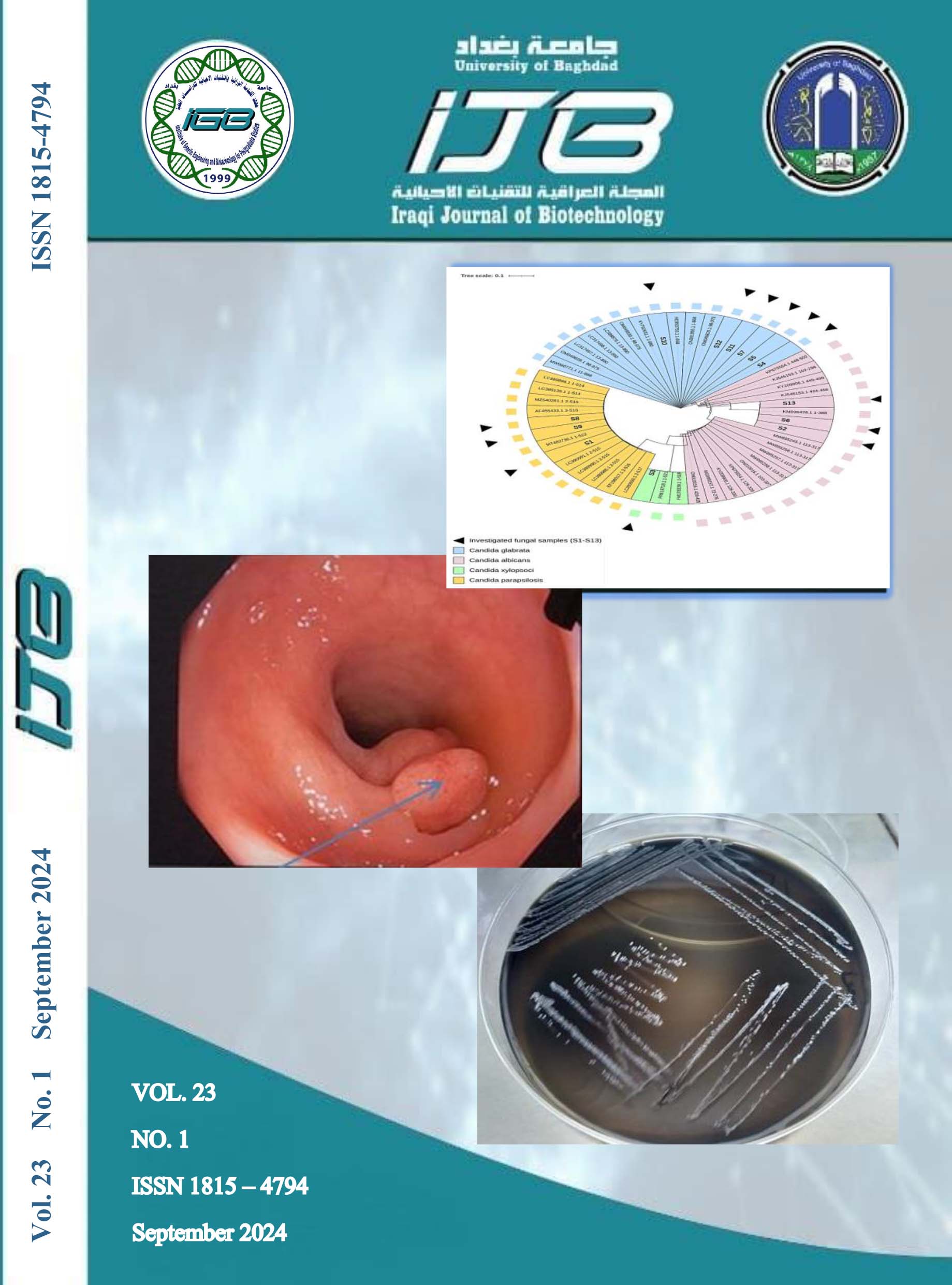Effect of Histatin 5 Peptide on ERG11 and CDR1 Gene Expression in Fluconazole-Resistant Candida albicans Isolated from Vaginitis
Abstract
Candida albicans with antifungals resistance and biofilm formation may cause complicated infections among women with Vaginitis. Therefore, the search for new drugs capable of overcoming antifungal resistance is essential. One of the alternative therapeutic agents is Histatin 5 which is an antimicrobial peptide that can be found naturally in human saliva. This study was aimed to evaluate the role of Histatin 5 as antimicrobial and antibiofilm agent against fluconazole-resistant C. albicans isolates. Also, study the effect of this peptide on the gene expression of the fluconazole-resistant genes (CDR1 and ERG11). The results of minimum inhibitory concentrations (MICs) using microtiter plate method revealed that the MICs of seven fluconazole-resistant C. albicans isolates were (62.5-250 μg/ml). The antibiofilm activity of Histatin 5 demonstrated that this peptide was able to reduce the biofilm formation to 23% at the concentration 62.5 μg/ml, and to 41% at the concentration 31.25, in comparison with the control (100%). Relative quantification (RQ) was used to calculate the fold change in gene expression using the delta delta Ct value and the gene expression of C. albicans isolates was calculated before and after treatment with the subinhibitory concentration of each isolate. Before to Histatin 5 treatment, the fold of gene expression in the CDR1 gene was slightly higher (1), and the fold of the resistant isolates after Histatin 5 treatment was low (0.07-0.38). Also for ERG11 gene, Before Histatin 5 treatment, the fold of gene expression was slightly higher (1). After Histatin 5 treatment, the fold of gene expression was low (0.11-0.31). In conclusion, the obvious activity of Histatin 5 peptide as antimicrobial and antibiofilm agent against fluconazole-resistant C. albicans isolates may be contributed in the management and control the vaginitis infections among Iraqi women.


